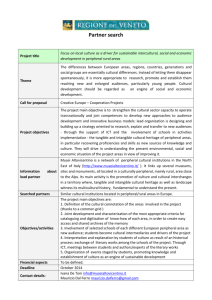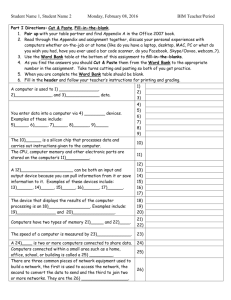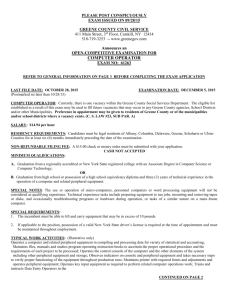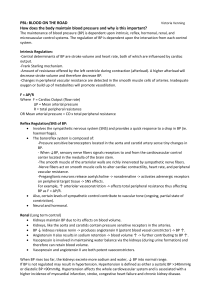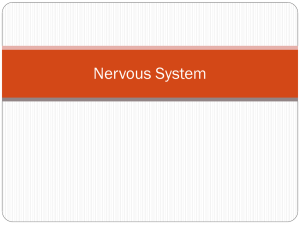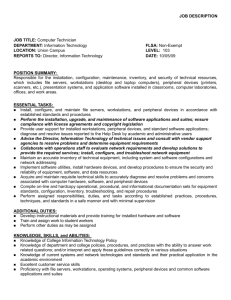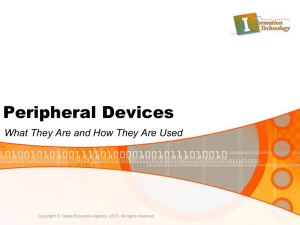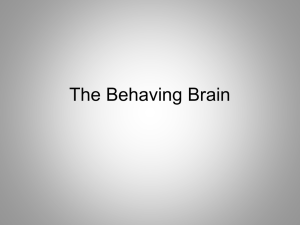Average Body Temperature (°F)
advertisement
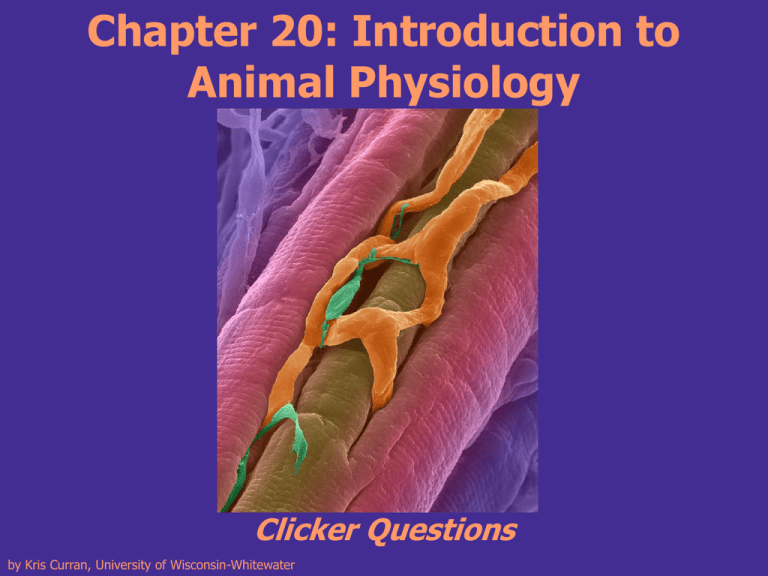
Chapter 20: Introduction to Animal Physiology Clicker Questions by Kris Curran, University of Wisconsin-Whitewater What conditions in a cell or tissue can cause proteins to unfold (denature)? 1. 2. 3. 4. 5. 6. 7. pH 7 (neutral pH) pH 4 (acidic pH) 37oC (about 98.6oF) 42.8oC (about 109oF) 1 and 3 2 and 4 All of the above Classroom Catalyst Homeostasis and Body Temperature Matching Classroom Catalyst - Slide 2 Match the correct average body temperature with the correct animal. Some temperatures may be used more than once. Animals • • • • • • • • • • • • • Human Cow Dog Donkey Flying squirrel Parakeet Mouse Sheep Seal Tiger Elephant Goats Whale Average Body Temperature (°F) • • • • • • • • • • 97.9 98.4 98.6 99.5 100.4 101.7 102.2 102.7 103.4 104 Classroom Catalyst - Slide 3 Body temperature (°C) Body temperature (°F) Human 37.0 98.6 Cow 38.0 100.4 Dog 39.0 102.2 Donkey 38.7 101.7 Flying squirrel 36.9 98.4 Parakeet 40.0 104 Mouse 36.9 98.4 Sheep 39.3 102.7 Seal 38.0 100.4 Tiger 37.5 99.5 Elephant 36.5 97.7 Goats 39.7 103.4 Whale 37.0 98.6 Animal Which example below is an example of conforming to the environment? 1. The embryonic development of frog embryos (tadpoles) slows at lower temperatures. 2. When blood sugar levels drop in humans, glycogen is hydrolyzed to glucose and released to the bloodstream. 3. The kidney of salt water fish (like tuna) constantly excretes salts. 4. 2 and 3 5. All of the above A polar bear who hibernates in the winter is classified as a… 1. 2. 3. 4. homeotherm and an ectotherm. homeotherm and an endotherm. heterotherm and ectotherm. heterotherm and endotherm. If we are not properly dressed on a cold winter day our bodies react. We may experience less blood flow to our hands and feet. In this scenario, which type of heat exchange are we influencing? 1. We are decreasing the amount of heat lost (convection) to the surrounding air through our hands and feet to maintain core body temperature. 2. We are increasing the amount of heat lost (radiation) through our hands and feet to maintain core body temperature. 3. We are releasing heat through evaporation to cool our hands and feet. 4. We are decreasing the amount of heat (conduction) with the surrounding air through our hands and feet to maintain core body temperature. What mechanism below is used to remove water from the kidney? 1. Active transport of Na+ ions and water. 2. Active transport of Na+ ions, which allows passive transport of water. 3. Passive transport of Na+ ions, which allows active transport of water. 4. Passive transport of both Na+ ions and water. Which example below is NOT likely an example of an injury to your connective tissue? 1. 2. 3. 4. 5. 6. muscle tear back injury tendonitis broken arm knee injury All of the above What type of epithelium below helps with temperature regulation in humans? 1. skin 2. mucus glands 3. digestive tract lining 4. blood 5. sweat glands 6. 4 and 5 Think hard about movement of the blood through blood vessels. There is a pulse associated with blood flow. Blood flow is aided by body movement. Lastly, blood pressure can be controlled unconsciously by increasing or decreasing the diameter of the blood vessel. Therefore, what type of muscle or muscles are used to regulate blood flow in your body? 1. 2. 3. 4. 5. cardiac muscle skeletal muscle smooth muscle 1 and 2 All of the above It is hard to separate the activities of the central and peripheral nervous systems. Your eye detecting the image of an apple (seeing an apple) involves first _________ nervous system. The image is then interpreted by your __________ nervous system. If you decide to reach for the apple, you first use your _______ nervous system followed by the __________ nervous system. 1. 2. 3. 4. central….peripheral….central…..peripheral central…..central…..peripheral…peripheral peripheral…..peripheral…central….central peripheral…..central……central…..peripheral The organ systems of your body need to work together; therefore, performing any task will likely involve more than one organ system. Which organ system would not be involved in eating an apple? 1. 2. 3. 4. 5. muscular system skeletal system digestive system respiratory system reproductive system
